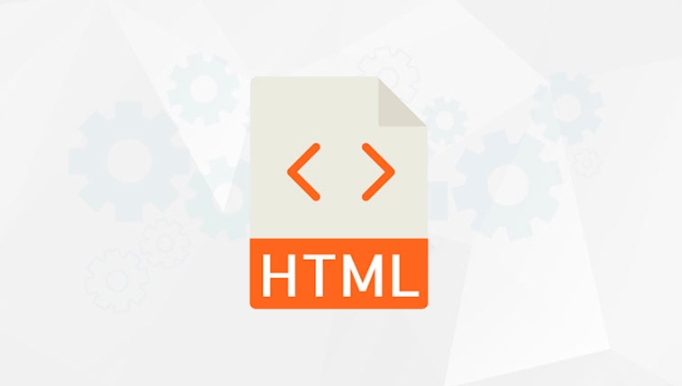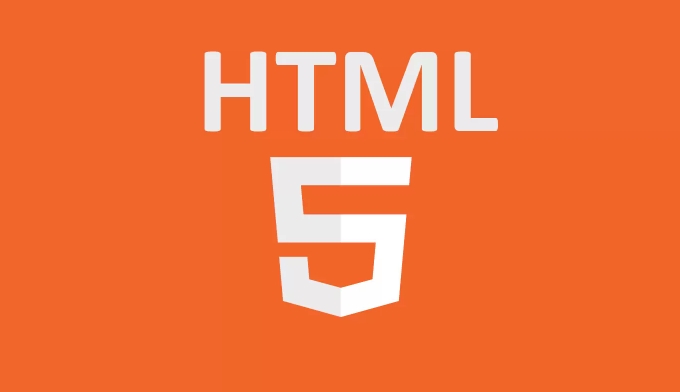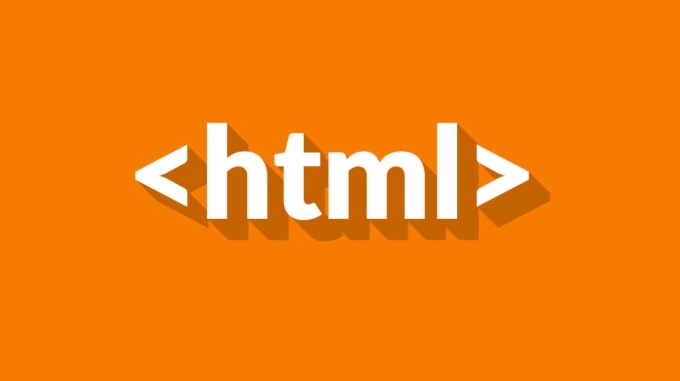What is the value attribute for a list item () in an ordered list?
Jul 12, 2025 am 12:05 AMThe
<li> tag in an ordered list (- ) uses the value attribute to customize the number of list items. 1. By default, the browser automatically numberes according to the location; 2. Use value to override this behavior, suitable for list paging, dynamic content, or scenarios where fixed numbers are required; 3. Once the value of an item is set, subsequent items will be incremented based on this value; 4. The value must be a positive integer, which is only valid in
- , and does not affect the style and compatibility should be tested with caution.

In an ordered list, the value attribute of a list item ( <li> ) specifies the number that the item should be labeled with. By default, browsers automatically assign numbers to list items in an <ol></ol> (ordered list) based on their position. However, using the value attribute lets you override this behavior and set a custom starting number for a specific list item.
 ) in an ordered list?" />
) in an ordered list?" /> Why Use the value Attribute?
You might want to use the value attribute when:
-
<li> You're continuing a list from a previous point (eg, splitting a list across pages or sections).
<li> You need to restart numbering at a certain value.
<li> You're working with dynamic content where list items are added or removed, and you want to preserve consistent numbering.
For example:
 ) in an ordered list?" />
) in an ordered list?" /><ol> <li value="5">This will be labeled as 5</li> <li>This will be labeled as 6</li> <li>This will be labeled as 7</li> </ol>
In this case, the browser will start counting from 5 and increment normally from there.
Common Use Cases
Here are a few practical examples where setting the value makes sense:
 ) in an ordered list?" />
) in an ordered list?" />- <li> Pagination : If a list is split across multiple pages, you can ensure the numbering continues correctly.<li> Dynamic Lists : When adding or removing items via JavaScript, you might want to keep consistent numbering even if some items are hidden or filtered out.<li> Accessibility : Screen readers often read out list item numbers. Setting explicit values ??ensures users hear the correct sequence.
How It Affects Following Items
Once you set the value on a list item, all subsequent items in the same list will continue counting from that value unless another value is specified.
Example:
<ol> <li value="3">Item C</li> <li>Item D</li> <li>Item E</li> </ol>
This will display as: 3. Item C
4. Item D
5. Item E
So it's important to remember: changing one item's value affects how the rest of the list is numbered.
Things to Keep in Mind
-
<li> The
value must be a positive integer.
<li> It only works inside an <ol></ol> , not in unordered lists ( <ul></ul> ).
<li> Styling won't change based on the value — the visual appearance still depends on CSS or default browser styles.
<li> Not all browsers may handle extreme or invalid values ??gracefully, so test carefully.
Basically that's it.
The above is the detailed content of What is the value attribute for a list item () in an ordered list?. For more information, please follow other related articles on the PHP Chinese website!

Hot AI Tools

Undress AI Tool
Undress images for free

Undresser.AI Undress
AI-powered app for creating realistic nude photos

AI Clothes Remover
Online AI tool for removing clothes from photos.

Clothoff.io
AI clothes remover

Video Face Swap
Swap faces in any video effortlessly with our completely free AI face swap tool!

Hot Article

Hot Tools

Notepad++7.3.1
Easy-to-use and free code editor

SublimeText3 Chinese version
Chinese version, very easy to use

Zend Studio 13.0.1
Powerful PHP integrated development environment

Dreamweaver CS6
Visual web development tools

SublimeText3 Mac version
God-level code editing software (SublimeText3)

Hot Topics
 Explain the purpose of the role attribute in ARIA.
Jun 14, 2025 am 12:35 AM
Explain the purpose of the role attribute in ARIA.
Jun 14, 2025 am 12:35 AM
ARIA's role attribute is used to define the role of web elements and improve accessibility. 1. Role attribute helps assistive technology to understand the functions of elements, such as buttons, navigation, etc. 2. Use role attributes to assign specific roles to non-semantic HTML elements. 3. The role attribute should be consistent with the element behavior and be verified by the accessibility tool test.
 HTML and Design: Creating the Visual Layout of Websites
Jun 14, 2025 am 12:39 AM
HTML and Design: Creating the Visual Layout of Websites
Jun 14, 2025 am 12:39 AM
How to create a website layout? 1. Use HTML tags to define the content structure, such as, ,. 2. Control styles and positions through CSS, using box model, float or Flexbox layout. 3. Optimize performance, reduce HTTP requests, use cache and optimize images, and ensure responsive design.
 How do I stay up-to-date with the latest HTML standards and best practices?
Jun 20, 2025 am 08:33 AM
How do I stay up-to-date with the latest HTML standards and best practices?
Jun 20, 2025 am 08:33 AM
The key to keep up with HTML standards and best practices is to do it intentionally rather than follow it blindly. First, follow the summary or update logs of official sources such as WHATWG and W3C, understand new tags (such as) and attributes, and use them as references to solve difficult problems; second, subscribe to trusted web development newsletters and blogs, spend 10-15 minutes a week to browse updates, focus on actual use cases rather than just collecting articles; second, use developer tools and linters such as HTMLHint to optimize the code structure through instant feedback; finally, interact with the developer community, share experiences and learn other people's practical skills, so as to continuously improve HTML skills.
 How do I use the element to represent the main content of a document?
Jun 19, 2025 pm 11:09 PM
How do I use the element to represent the main content of a document?
Jun 19, 2025 pm 11:09 PM
The reason for using tags is to improve the semantic structure and accessibility of web pages, make it easier for screen readers and search engines to understand page content, and allow users to quickly jump to core content. Here are the key points: 1. Each page should contain only one element; 2. It should not include content that is repeated across pages (such as sidebars or footers); 3. It can be used in conjunction with ARIA properties to enhance accessibility. Usually located after and before, it is used to wrap unique page content, such as articles, forms or product details, and should be avoided in, or in; to improve accessibility, aria-labeledby or aria-label can be used to clearly identify parts.
 How do I create a basic HTML document?
Jun 19, 2025 pm 11:01 PM
How do I create a basic HTML document?
Jun 19, 2025 pm 11:01 PM
To create a basic HTML document, you first need to understand its basic structure and write code in a standard format. 1. Use the declaration document type at the beginning; 2. Use the tag to wrap the entire content; 3. Include and two main parts in it, which are used to store metadata such as titles, style sheet links, etc., and include user-visible content such as titles, paragraphs, pictures and links; 4. Save the file in .html format and open the viewing effect in the browser; 5. Then you can gradually add more elements to enrich the page content. Follow these steps to quickly build a basic web page.
 What is an HTML tag?
Jun 13, 2025 am 12:36 AM
What is an HTML tag?
Jun 13, 2025 am 12:36 AM
HTMLtagsareessentialforstructuringwebpages.Theydefinecontentandlayoutusinganglebrackets,ofteninpairslikeand,withsomebeingself-closinglike.HTMLtagsarecrucialforcreatingstructured,accessible,andSEO-friendlywebpages.
 How do I create checkboxes in HTML using the element?
Jun 19, 2025 pm 11:41 PM
How do I create checkboxes in HTML using the element?
Jun 19, 2025 pm 11:41 PM
To create an HTML checkbox, use the type attribute to set the element of the checkbox. 1. The basic structure includes id, name and label tags to ensure that clicking text can switch options; 2. Multiple related check boxes should use the same name but different values, and wrap them with fieldset to improve accessibility; 3. Hide native controls when customizing styles and use CSS to design alternative elements while maintaining the complete functions; 4. Ensure availability, pair labels, support keyboard navigation, and avoid relying on only visual prompts. The above steps can help developers correctly implement checkbox components that have both functional and aesthetics.
 How do I minimize the size of HTML files?
Jun 24, 2025 am 12:53 AM
How do I minimize the size of HTML files?
Jun 24, 2025 am 12:53 AM
To reduce the size of HTML files, you need to clean up redundant code, compress content, and optimize structure. 1. Delete unused tags, comments and extra blanks to reduce volume; 2. Move inline CSS and JavaScript to external files and merge multiple scripts or style blocks; 3. Simplify label syntax without affecting parsing, such as omitting optional closed tags or using short attributes; 4. After cleaning, enable server-side compression technologies such as Gzip or Brotli to further reduce the transmission volume. These steps can significantly improve page loading performance without sacrificing functionality.






